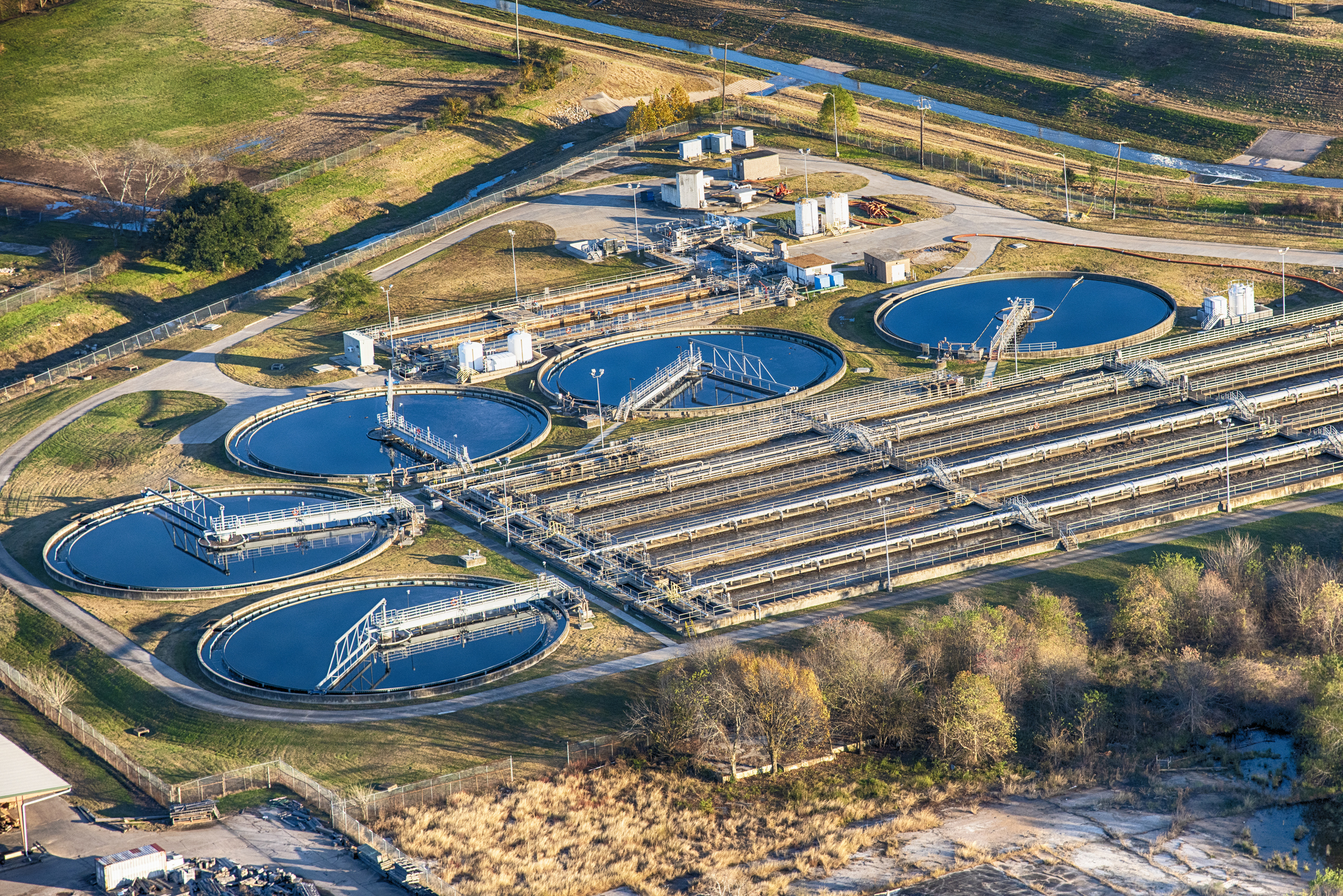Water Pressure: Why Aging Infrastructure Isn’t the Only Factor Driving Water Engineering Demand
From flooding catastrophes to population migration, the need to upgrade water infrastructure continues to surge

Communities across the U.S. continue to reel from catastrophic flooding earlier this month, with deadly rainfall devastating towns in Texas, New Mexico and North Carolina in a single week. As death tolls rise, analysts are now assessing what went wrong—and what can be done to avoid similar events in the future.
Water infrastructure often sits at the center of these discussions, and for good reason. According to experts who spoke with Middle Market Growth, water engineering will play a crucial role in protecting communities, from redeveloping storm drain systems to upgrading drinking water treatment infrastructure.
“What cannot be discounted, in terms of the enormity of focus over the coming 10 years, is the need for the redevelopment of our overall water infrastructure throughout the United States, and that includes every aspect of the hydraulic cycle,” says Jim Thompson, Chairman and CEO of Houston-based consulting group DCCM. In water engineering, that cycle he’s referring to is the natural water cycle between the atmosphere, land and bodies of water, and how man-made infrastructure interacts with it. “It’s the rainfall we experience, and how we manage those stormwater events,” he explains. “The recent crisis we’ve had here in Texas is a prime example of that.”
But it’s not just flooding events that are putting water engineering in the headlines. Emerging health concerns in drinking water, the rise of water-intensive tech industries like AI and semiconductors, and shifting population patterns have all introduced new growth opportunities for the market.
What cannot be discounted, in terms of the enormity of focus over the coming 10 years, is the need for the redevelopment of our overall water infrastructure throughout the United States.
Jim Thompson
DCCM
Water Pressure
Thompson launched DCCM, which stands for Design, Consulting and Construction Management, in January of 2021. The company has since expanded beyond its Houston headquarters to 46 states including California, Florida, Georgia and Indiana.
M&A has been key to the company’s growth. DCCM made its first acquisition only five months after launch, ultimately striking deals with 10 investment targets over the years. Last month the company announced that middle-market private equity firm Court Square Capital Partners acquired a majority stake in the business. The sponsor provides a “common alignment of visions” with DCCM, Johnson explains, adding that with Court Square, the company expects to double its size over the next five years through strategic acquisitions and organic growth initiatives.
Plenty of tailwinds support DCCM’s continued expansion across the broader civil engineering space, but water engineering is a particularly high-growth area of the market thanks to several macro trends increasing demand for infrastructure upgrades and innovation, according to experts.
Sai Parepally, a vice president at lower middle-market private investment firm VSS Capital Partners, says there are “simultaneous stressors increasing demand” for water infrastructure, with intensifying flooding events certainly top-of-mind. Rising sea levels will also continue to shine a spotlight on water and coastal engineering as municipalities look to upgrade drainage systems and flood prevention infrastructure, as well as reinforce drinking water systems that can be particularly vulnerable after a flood.
Emerging research into per- and poly-fluoroalkyl substances (PFAS), also known as forever chemicals or microplastics, has further heightened concern over drinking water safety. “Testing, infrastructure and measurement (of these contaminates) is not as sophisticated as you might believe,” says Parepally.
He also points to population migrations stemming from COVID and work-from-home opportunities that saw people move into more affordable, though often water-scarce, Sun Belt states like Texas and Arizona. The resulting population gains in various regions introduce new demand for water infrastructure, both for access and conservation, he notes.
These regions have also experienced an uptick in water-intensive tech activity. AI data centers and semiconductor manufacturing operations, for example, have expanded in Southwest regions, requiring local infrastructure to meet their demands for water for system cooling, ultrapure water used in fabrication and cleaning, and water-generated electricity. “You’ll have firms willing to spend, but what you’ll often see is the real constraint is they’re waiting for a power hookup, or water support for liquid cooling,” says Parepally.
He adds that the market is beginning to understand these massive water demands have become the new norm. “These levels of water expenditure are par for the course,” he says, “and they’re going to be par for the course for the next few years—and then likely even increase” as the Trump administration continues to support tech development on U.S. soil.
These levels of water expenditure are par for the course, and they’re going to be par for the course for the next few years—and then likely even increase.
Sai Parapally
VSS Capital Partners
Funding Gaps
According to DCCM’s Thompson, there is widespread federal, state and local support for water infrastructure upgrades. The challenge is filling the funding gaps necessary for those projects.
The American Society of Civil Engineers (ASCE) gave U.S. drinking water infrastructure a grade of C-, and its wastewater infrastructure a D+, in 2025 reports. The ASCE estimates the nation’s drinking water infrastructure will require more than $625 billion in investment over the next 20 years to address key concerns, while wastewater and stormwater infrastructure is expected to face a funding gap of more than $690 billion by 2044.
“Candidly, it’s been neglected over past decades,” says Thompson. “Across the entire spectrum of needs, whether it be urban stormwater management, water treatment and distribution, or wastewater collection and treatment—the fact of the matter is, from a macro perspective, you simply cannot ignore the enormity of the investment that is necessary within our communities.”
The most common way of funding these projects is through water utility rates paid for by citizens. “The question is, are those utility rates at a level that can support the needed infrastructure development in the water space? Many times, they are not,” says Thompson, adding that this is often the largest “pinch point” in the water engineering space. This challenge is exacerbated by debate around how to raise rates equitably for systems that interconnect through municipalities that may be paying different rates. State funding agencies, startup funding and grants will be key to supplementing existing funding sources, though it’s “easier said than done,” he says.
The good news, however, is that the water engineering space is expected to continue to grow to meet evolving challenges, and M&A investors stand to benefit from that momentum.
A query in middle-market search engine Grata yields 4,945 businesses in the water engineering space, more than 89% of which are private, bootstrapped operations.
In addition to Court Square’s recent acquisition of DCCM, recent deals include VSS portfolio company The HFW Companies’ May acquisition of Southwest Engineers, a civil engineering firm specializing in wastewater treatment and water storage. And last month, Turnspire Capital Partners announced the recapitalization of portfolio company USG Water Solutions, a provider of maintenance services to municipal and private water companies.
When considering the mounting demand for infrastructure upgrades, experts agree that M&A activity is likely to continue as investors and municipalities look to move quickly on the projects that do get funded.
Parepally says that while multiples in this space are rising, not all water engineering targets are created equal, and innovation has created a particularly large value-add opportunity for certain targets. “If you’re a firm servicing the data center end market, you will likely trade extremely differently than somebody focused on residential tract development in Wyoming,” he notes. “I think people always appreciated that there was a difference in how those businesses should trade, but those spreads were much narrower at one point, and it didn’t make sense for those spreads to have been that narrow.”
Carolyn Vallejo is Middle Market Growth’s senior editor.
Middle Market Growth is produced by the Association for Corporate Growth. To learn more about the organization and how to become a member, visit www.acg.org.


